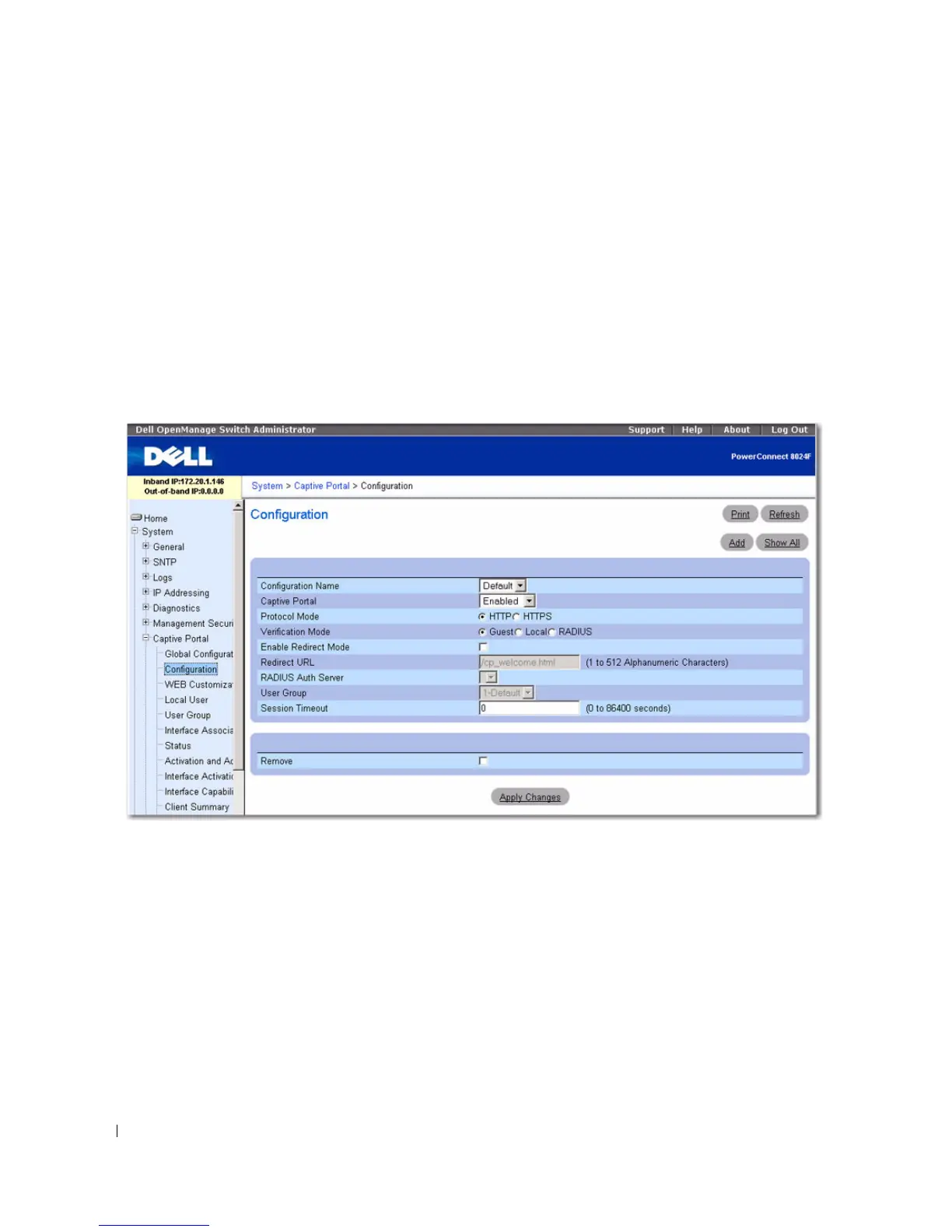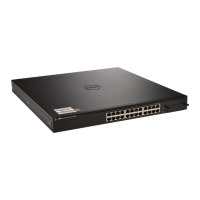186 Configuring System Information
CP Configuration
From the CP Configuration page, you can view summary information about captive portals on the
system, add a captive portal, and configure existing captive portals.
The switch supports 10 CP configurations. CP configuration 1 is created by default and can not be
deleted. Each captive portal configuration can have unique guest or group access modes and a
customized acceptance use policy that displays when the client connects.
To view summary information about existing captive portals, or to add or delete a captive portal, click
System
→
Captive Portal
→
Configuration.
Figure 6-67. CP Configuration
The CP Configuration page contains the following fields:
•
Configuration Name
— If multiple CP configurations exist on the system, select the CP configuration
to view or configure. Use the
Add
button to add a new CP configuration to the switch.
•
Captive Portal
— Use this field to enable or disable the selected CP configuration.
•
Protocol Mode
— Choose whether to use HTTP or HTTPS as the protocol for the portal to use during
the verification process.
–
HTTP
— Does not use encryption during verification
–
HTTPS
— Uses the Secure Sockets Layer (SSL), which requires a certificate to provide
encryption. The certificate is presented to the user at connection time.
•
Verification Mode
— Select the mode for the CP to use to verify clients:

